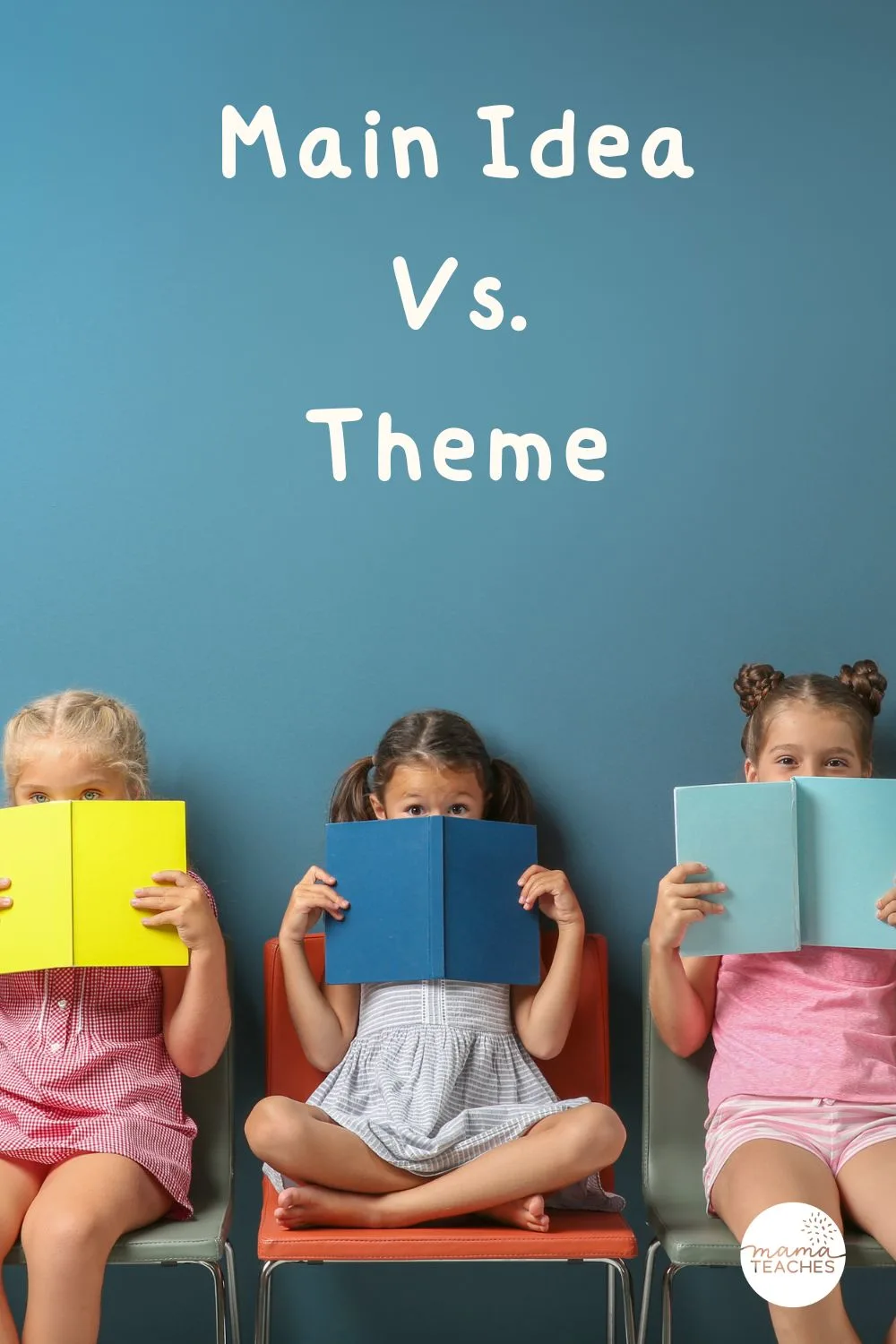“What is this story about?” Do you respond with the main idea or the theme? Read below to find out about both literary concepts.

Understanding Main Idea Vs. Theme
Most people have only a foggy idea of the definitions of a story’s main idea and theme.
It’s essential to know the difference.
Every story should have a unique main idea.
But themes will reappear from one story to the next. They are truths about human nature or life in general.

This article contains affiliate links to things that you might like.
What Is the Main Idea?
The story’s main idea is a concise summary of the story.
Every story has a central problem and (often) a resolution.
The main idea of a story encapsulates that problem in a short sentence.
For example, the main idea of “Little Red Riding Hood” is this:
“The wolf dresses up as Little Red Riding Hood’s grandmother to trick Red and eat her.”
The main idea is always a sentence.
What is the Theme?
The theme of a story is the lesson, message, or moral of a story.
It is a truth about human nature or a piece of advice on how to make your way in the world.
A theme does not have to be a sentence; it could be a single word.
For example, a theme in “Little Red Riding Hood” could be “trust.”
Little Red Riding Hood went from trusting the wolf was her grandmother to losing that trust as she used her powers of observation.
You could express this in a sentence: “Don’t trust someone just because they seem nice.”
Themes aren’t always named in the story (although they can be in the case of a moral).
That’s why people may disagree on the central theme of a story.
For example, some may say the theme of “Little Red Riding Hood” is not trust but “innocence.”
Little Red Riding Hood was not aware of any danger in the woods. After this experience, she might be a more suspicious or cautious person.

Exploring the Main Idea and Theme
Let’s consider another example of the main idea and theme. Consider the story of “The Fox and the Crow.”
One day, a crow nabbed a bit of tasty cheese. He flew high up in a tree to enjoy the tasty morsel.
A fox happened by. He wanted the cheese but could not climb the tree.
So he cooed, “Beautiful crow, I have heard you have the loveliest voice in the forest. Will you not sing for me?”
The crow, who was rather proud of his voice, opened his beak to caw and show off for the fox.
At once the cheese tumbled out of its beak and straight into the fox’s mouth.
The fox swallowed the cheese in one gulp and sauntered away.
What is the main idea of this story? It is one sentence that summarizes what the story is about.
The main idea retells the basic plot in the simplest terms.
“The fox flattered the crow to get at the cheese.”
What is the theme? That is not as obvious.
Does the story teach a lesson? This could be the theme.
“Beware of those who flatter you.”
You could also choose a word or phrase like “flattery” or “vanity.”

The Importance of Main Idea and Theme
The main idea and theme are both critical to understand.
The main idea of a story helps you quickly name the problem at its core.
This can help you group a story by genre. For example, is it an adventure story, a romance, or a mystery?
What other stories are similar?
Identifying the theme (or themes if it is a longer story) can help you understand what the author is trying to say through the story.
Typically, an author has a message for the reader or an opinion about life that they want to express.
You can identify the theme to uncover the meaning or intention behind a piece of writing.
Tips for Identifying the Main Idea and Theme
If you are trying to teach the concepts of main idea and theme, consider making an anchor chart.
Use question prompts such as:
Main Idea: What is a sentence that tells what happens in this story?
Theme: What is this story’s message, moral, or lesson?
You can then give examples from stories that everyone knows under each column.
These can be stories you have read as a class (and so you fill out the chart over time).
Make sure that in the theme category, you show that a theme can be a single word (like “love”) or a sentence (“Love is the greatest gift.”).
Students can refer to the anchor chart until they have a firm grasp of identifying the main idea vs. theme.

Recapping Main Idea Vs. Theme
The main idea summarizes the plot of the story in one sentence.
It answers the question, “What happened in the story?”
The theme (and there could be more than one) is the truth about human nature that the author is trying to convey.
It answers the question, “What is the story’s lesson, message, or moral?”
Now you know how to tell the difference between the main idea and the theme!
